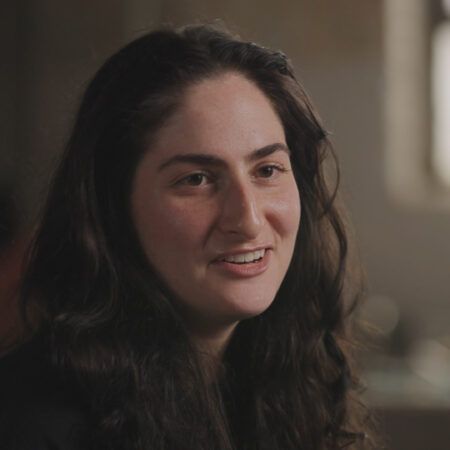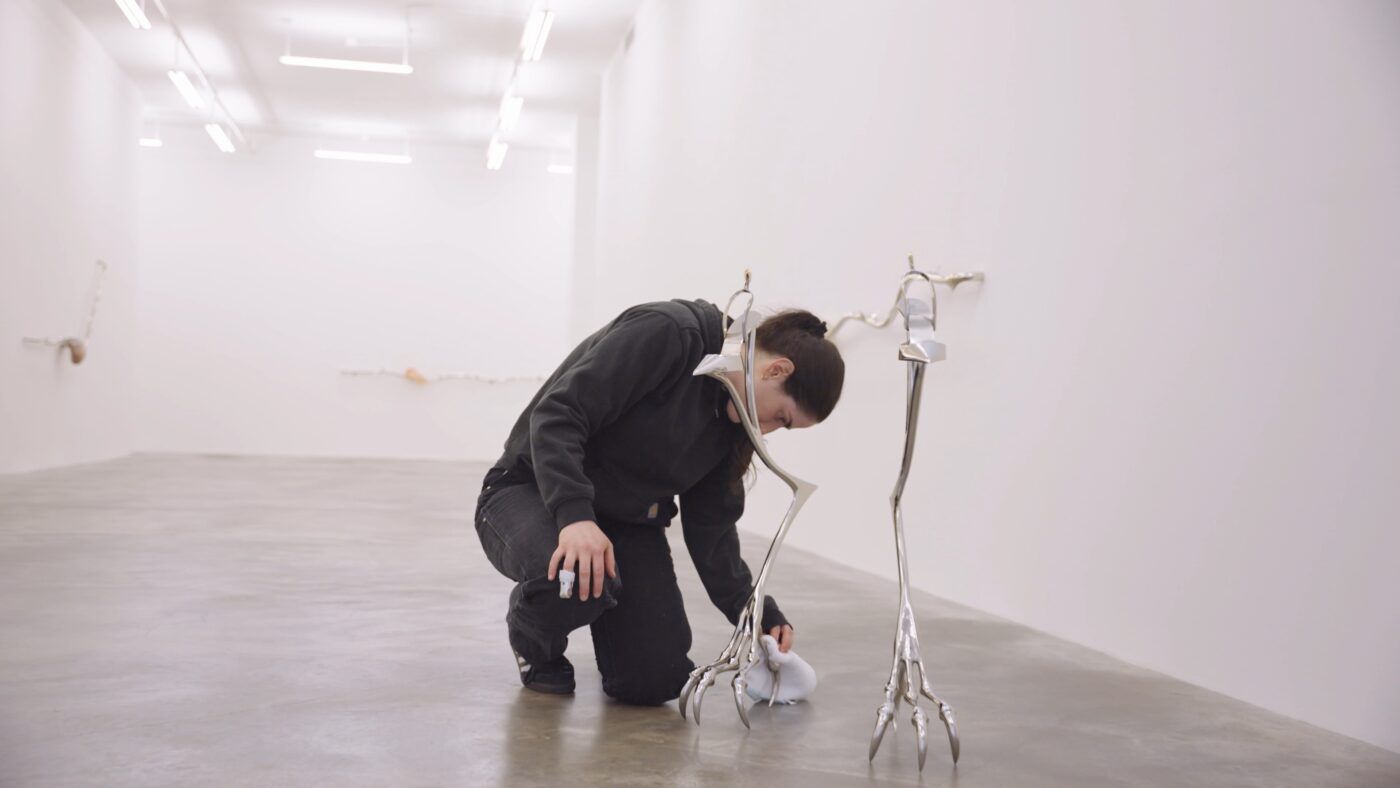Hannah Levy

Hannah Levy was born in 1991 in New York City, New York, where she currently lives and works. The artist received a BFA from Cornell University in 2013 and a Meisterschüler title from Städelschule in Frankfurt am Main in 2015. Levy’s sculptures are uncannily familiar, transforming ubiquitous elements of interior design into unnamable objects that appear to merge the organic and the industrial. Through her practice, the artist calls attention to the relationship between our bodies and the built environment, considering how we are impacted by the design choices around us.
Two common materials in Levy’s sculptures are steel and silicone: steel because of its widespread use in the modern and industrial design we encounter on a daily basis and silicone because of its visual and textural similarities to flesh. Examining structures that condition or shape our bodies and lives, Levy’s sculptures amplify the contrast and conflict between the organic and industrial. “I like that when something looks like it’s being pushed or pulled or squeezed in a sculpture, that really is what’s happening,” says the artist. “The silicone is being pushed or pulled or squeezed in those directions.” Working with the tension between the organic and industrial, the artist stretches, squeezes, and hangs skin-like silicone molds from steel structures that resemble objects like a chaise longue, an umbrella, or a chandelier. Levy’s exploration of the body’s relationship to design is not limited to steel and silicone. The artist uses marble and tubular steel in Retainer (2021), an enlarged facsimile of a retainer. In her 2023 exhibition Crutch, the artist integrates glass into her material lexicon, casting the glass into warty, gourd-like forms that are draped over thorny steel bars affixed to the wall at the height of a handrail.
Throughout her practice, sculptures suggest specific forms for the body and reference tools and techniques designed for shaping the body, like corsets or retainers. Other sculptures, such as those in Crutch, reference mobility devices and other adaptive tools whose design and presence determine how and where a body can move in space. Most of the artist’s works draw from multiple sources, combining elements of industrial design with references to clothing items and animal-like features, as in Untitled (2023), a claw-footed, stilt-like sculpture made of tubular steel with a high-heel form for a wearer to place their feet in. “A lot of the pieces that I make, they are objects that we are all familiar with,” says Levy. “But maybe, out of context, you take something that is really familiar and make it visible again.” Levy’s works highlight and complicate our daily interactions with the design elements around us, examining how everyday objects shape us, both literally and figuratively, and inviting us to see the built environment through fresh eyes.
Videos 1
“A lot of the pieces that I make, they are objects that we are all familiar with, but maybe out of context you take something that is really familiar and make it kind of visible again.”
Hannah Levy

